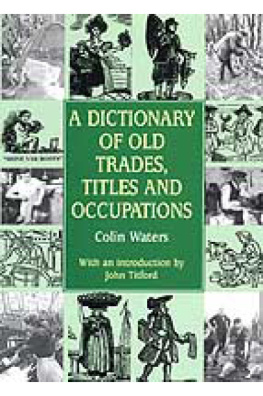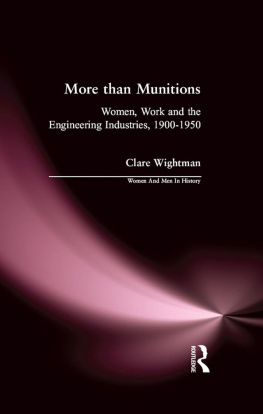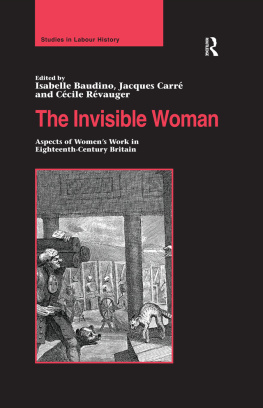Title Page
FEMALE OCCUPATIONS
Womens Employment 1850-1950
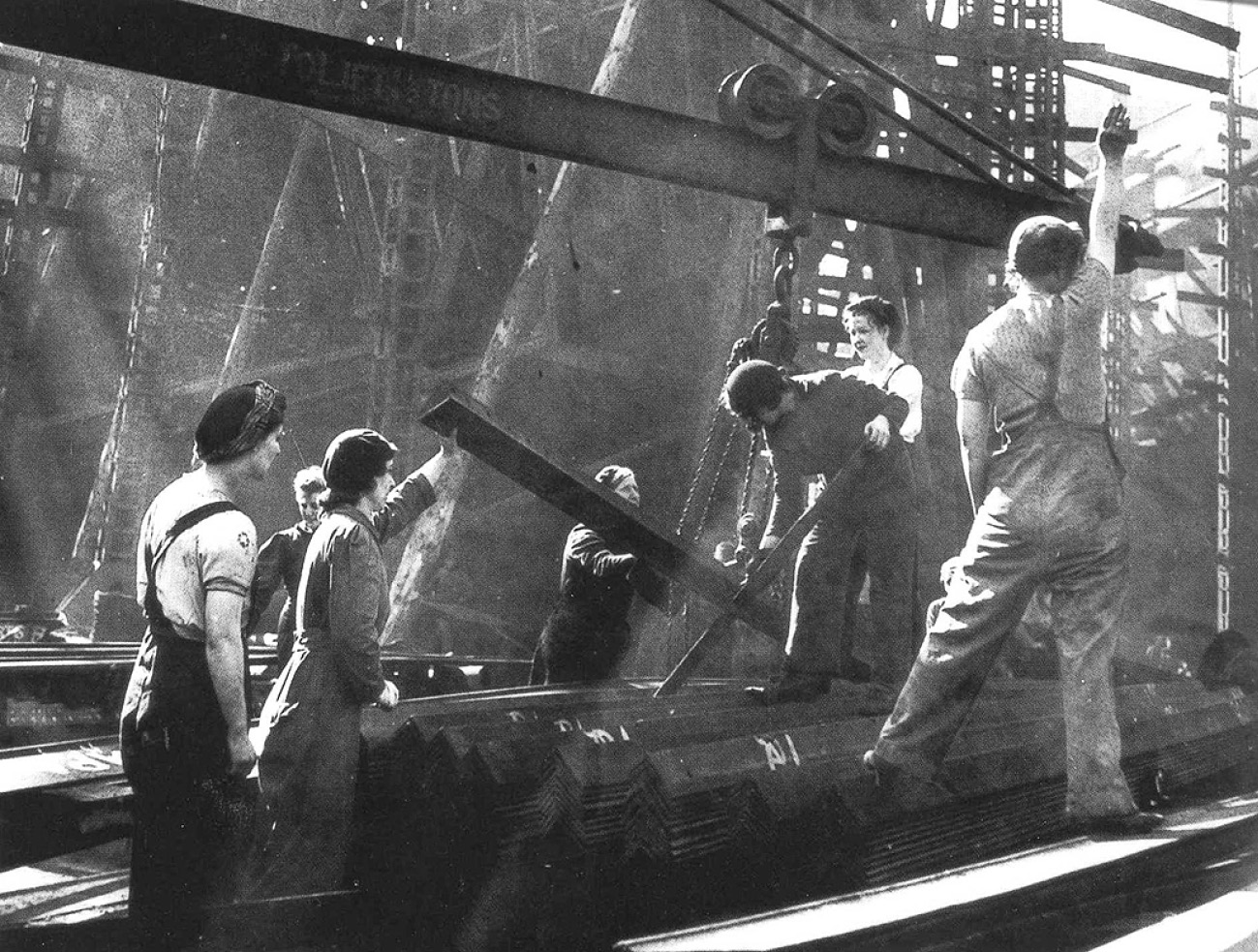
by Margaret Ward
Publisher Information
First published in 2008
Digital Edition converted and distributed in 2011 by
Andrews UK Limited
www.andrewsuk.com
Margaret Ward, 2008
All rights reserved. No reproduction permitted without the prior permission of the publisher:
COUNTRYSIDE BOOKS
3 Catherine Road
Newbury, Berkshire
www.countrysidebooks.co.uk
Designed by Peter Davies, Nautilus Design
Produced through MRM Associates Ltd., Reading
Introduction
Gone forever is the helpless woman
in a world of endless opportunity for energy and wit.
(Ignatius Phayre, War time service for women,
Windsor Magazine 1915)
Interest in the working lives of our female ancestors has increased tremendously over recent years. This book sets out to demonstrate the range and diversity of womens work spanning the last two centuries from bumboat women and nailmakers to doctors and civil servants and to suggest ways of finding out more about what often seems to be a hidden history.
There has been a great ebb and flow in womens employment during this time and a strange ambivalence about it too, equal to Lord Nelson lifting his telescope to his blind eye before declaring, I see no ships. Time and again, with great surprise, commentators and politicians have discovered... that women work. This collection of over 300 trades, industries and occupations followed by women in the 19th and 20th centuries is a tribute to our hard-working female ancestors.
In the 19th century, the labour of working class women and children carried forward the Industrial Revolution. They were neat, light workers for the mills and machinery, whose nimble fingers were an asset in this new working world. They toiled in mines and collieries, forged iron chains, made bricks, packed explosives, and much, much more.
Above all, they provided cheap labour. Throughout the 19th and most of the 20th century all women workers were paid less than the men who worked alongside them. The Equal Pay Act was only passed in 1970, followed by the 1984 amendment act that laid down equal pay for work of equal value, though even today cases arise where women are working for lower rates than men.
It was a problem that affected professional women too. When they were trying in the late 19th century to break through the barriers preventing them becoming fully accredited members of professional associations, the fear expressed by male colleagues was that admitting women would lead to lower rates of pay, and lower status, for all.
The persistence shown by women who wanted to become doctors, lawyers, accountants, etc. was remarkable, as were the lengths professional bodies of the late 19th and early 20th centuries went to in order to keep them out. It took legislation, beginning with the Sex Disqualification Removal Act 1919, to force the issue to its logical conclusion.
Yet women running a business were not new. By late Victorian times they are everywhere you look owning or managing shops, pubs, hotels, private schools and academies, brickworks, factories... the list goes on just browse through any contemporary trades directory. They were to be found in traditional male roles, too, such as the blacksmith or the miller, and by the later 19th century they had their own practices as accountants, dentists, doctors. Middle class women were beginning to demand a role in life outside the home, while working class women were discovering how to use political and trade union activity to their advantage.
The two world wars brought great charges. Women had long been involved in dirty, strenuous occupations but those were working class women and now articulate middle class girls had discovered that they, too, could weld metal, pack explosives and drive heavy vehicles.
It is hard nowadays to comprehend how large a part class played in Victorian times and beyond, yet it is essential to grasp the differences when considering our female ancestors. The choices for working class girls on leaving school were restricted to a degree that seems unbelievable today. The majority of young girls in the second half of the 19th century and up to the 1920s and 1930s found their choice of what to do after school boiled down to becoming a servant, a shop assistant, or a factory hand; often following in the footsteps of their mother or sisters. An ambition beyond that was seen as getting above yourself.
Domestic service was one of the major employers of female labour. Being able to afford a servant was a matter of social status for the middle classes and was not lightly given up. The number of female servants was consistently well over a million from 1861 to the Second World War, peaking in the 1890s. A distaste for domestic service, given an alternative, was apparent in working women during and after the First World War but the long years of the Depression drove many back into it. By the end of the Second World War, however, that world had gone for good. That lack of choice for girls was partly down to their education. Until they were educated beyond the need to be good wives and mothers, they could not take part in the white blouse revolution in offices, banks and the Civil Service, but from the late 1800s state education began, slowly, to make a difference.
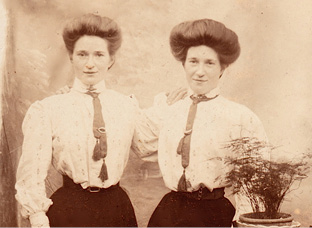
By the end of the 19th century middle class girls were seeking new opportunities in education and employment.
Yet middle class girls, too, faced obstacles in a choice of work. Educated they might be, but a girl would still need a little steel in her character to force her way into a profession and stay there, no matter how bored she might be with nothing to do. The middle class ideal was that a woman should not work outside the home. Even where she managed to find a good job, a marriage bar existed in most professions, offices, banks, the Civil Service, teaching, nursing, etc., until the 1960s or so if a woman married she lost her job, or was expected to bow out gracefully. To some extent this was a problem solved by part-time working, which was a wartime practice that continued after the 1940s because it filled a need, being popular with married women and a convenient and flexible alternative for employers about one in five women were working part-time in the 1950s. However, it proved a bit of a cul-de-sac for any woman wanting promotion or to follow a career.
Some working class women had always worked from home of course, as outworkers, an option used by industries such as dressmaking in all its forms, strawplaiting, lacemaking, glovemaking, weaving and many more. Although this could give women independence and sometimes a good wage, in too many cases it was a recipe for sweated labour, with starvation wages and insecurity thrown in.
The entries in this book concentrate on the period from the 1840s to the end of the Second World War, drawing on trends and experiences beyond those dates. It has not been possible to represent every occupation followed by women in fact, it would have been simpler to list all the jobs they did not do and especially in wartime they were present in every sphere of industry and commerce. There is, of course, much more to be discovered, as the books, websites and museums mentioned in individual entries will show. To save repetition, the ideas in the Finding Out More chapter are intended to be used with all the occupations.
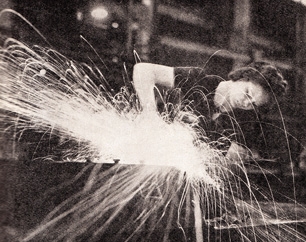
Next page
